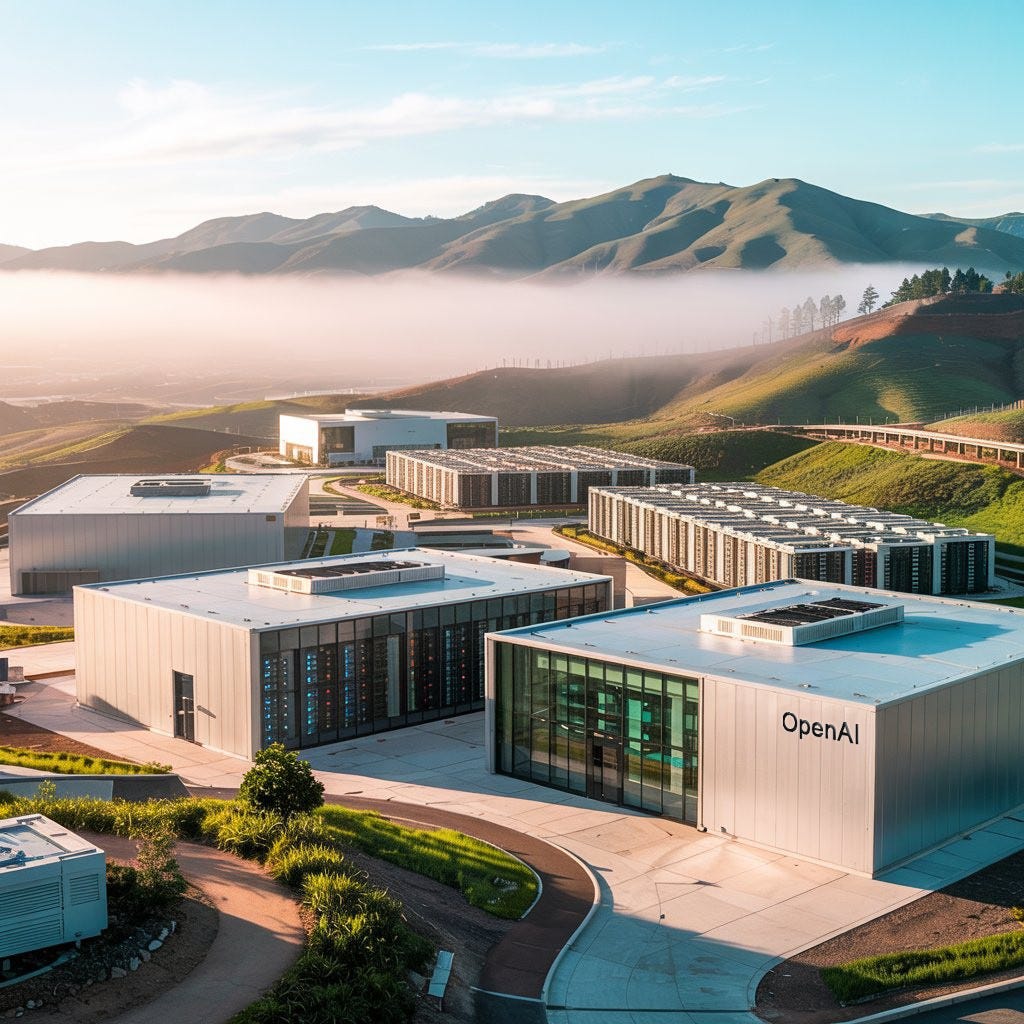Is OpenAI’s $1 Trillion Data Center Bet the Next Dot-Com Bubble or the Next Amazon?
Inside OpenAI’s trillion-dollar paradox: why betting on data centers could make or break AI.
Welcome to Global Data Center Hub. Join investors, operators, and innovators reading to stay ahead of the latest trends in the data center sector in developed and emerging markets globally.
Sam Altman has a habit of jolting the industry with bold statements.
This month, he admitted the AI market is in a bubble.
Valuations are “insane.” Investors are “overexcited.”
Most startups, he warned, will fail.
And yet, almost in the same breath, he pledged that OpenAI will spend trillions on data centers in the “not very distant future.”
At first glance, it seems contradictory:
Why acknowledge bubble dynamics while committing to the most aggressive infrastructure buildout in tech history?
The answer lies in Altman’s view of hype versus truth:
Bubbles form around something real. The internet was overhyped in the 1990s, yet its core truth reshaping the global economy was undeniable.
Altman believes AI is today’s kernel of truth, and capturing it requires not another app but control of the underlying infrastructure.
For OpenAI, the future isn’t about riding the bubble it’s about owning the rails of intelligence.
The Stargate Blueprint
OpenAI’s ambitions now reach far beyond model development.
With SoftBank and Oracle, the company has launched Stargate, a $500 billion initiative to deliver 10 gigawatts of capacity.
Its Abilene, Texas campus alone will consume as much electricity as a small city.
Stargate is not the destination it’s the proof of concept.
Spending will extend well beyond the initial $500 billion.
OpenAI’s goal isn’t just to lease from hyperscalers.
It seeks to own the entire stack: chips, land, power, cooling, and fiber. In this race, vertical integration becomes the ultimate moat.
The Financial Gap
There’s a problem.
OpenAI may generate $12.7 billion in revenue this year, crossing its first $1 billion month in July. Yet, even at this pace, those earnings barely register against trillion-dollar infrastructure ambitions.
Altman has hinted at a solution: a “new kind of financial instrument” for compute. It may sound abstract, but the implications are significant:
Investors could buy access to compute capacity much like oil futures or sovereign bonds.
“Compute credits” could emerge as a new digital commodity, tradable and integrated into capital markets.
If this vision takes shape, OpenAI won’t just be a research company it could become the foundation of a new asset class.
The Arms Race Context
The scale of Altman’s vision becomes clear only when set against the arms race already in motion.
Microsoft plans to invest $80 billion in data centers this year.
Google has committed $85 billion.
Amazon is on track to surpass $100 billion.
Meta expects $72 billion.
OpenAI aims to go further. Its declaration of “trillions” is not just a projection it’s a signal:
Leapfrog the hyperscalers.
Transform from an infrastructure tenant into a foundational AI utility.
The Risk and the Opportunity
The risks are evident.
A recent MIT study (supposedly) shows that 95% of enterprise AI integrations are failing to deliver meaningful value.
GPU shortages persist, and power grids are under mounting pressure as one hyperscale campus can consume the energy of 750,000 homes.
If the bubble bursts, vast sums could be stranded in unfinished projects.
Yet history offers a precedent. In the dot-com collapse:
Startups vanished overnight.
Fiber networks, data centers, and broadband endured becoming the foundation for the next wave of growth.
Altman is making the same bet. Even if capital is wiped out, the compute capacity remains and those who control it will define the future.
The Takeaway
OpenAI is attempting a transformation few expected.
From research lab to app maker, and now to global infrastructure utility. The path is filled with various risks (execution, financial, systemic).
But the potential reward is extraordinary:
Becoming the backbone of the intelligence economy.
The paradox isn’t really a paradox at all.
The bubble may pop, but the rails of AI are being laid now.
Whoever controls those rails will control the future.

